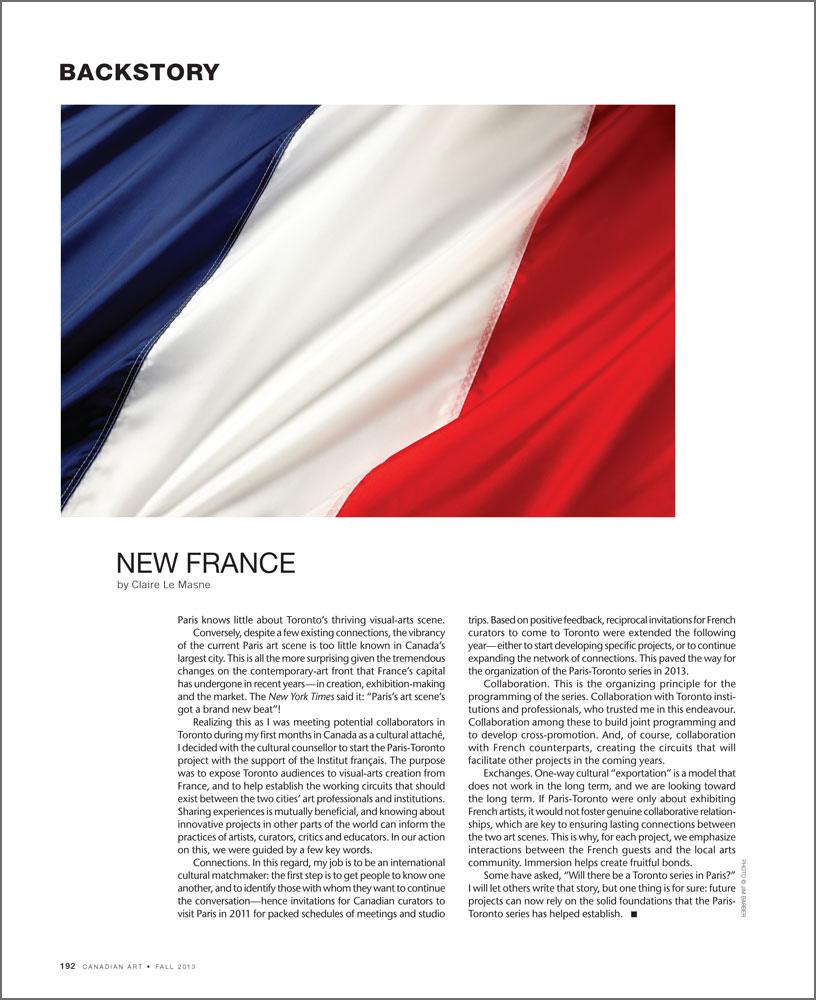Paris knows little about Toronto’s thriving visual-arts scene.
Conversely, despite a few existing connections, the vibrancy of the current Paris art scene is too little known in Canada’s largest city. This is all the more surprising given the tremendous changes on the contemporary-art front that France’s capital has undergone in recent years—in creation, exhibition-making and the market. The New York Times said it: “Paris’s art scene’s got a brand new beat”!
Realizing this as I was meeting potential collaborators in Toronto during my first months in Canada as a cultural attaché, I decided with the cultural counsellor to start the Paris-Toronto project with the support of the Institut français. The purpose was to expose Toronto audiences to visual-arts creation from France, and to help establish the working circuits that should exist between the two cities’ art professionals and institutions. Sharing experiences is mutually beneficial, and knowing about innovative projects in other parts of the world can inform the practices of artists, curators, critics and educators. In our action on this, we were guided by a few key words.
Connections. In this regard, my job is to be an international cultural matchmaker: the first step is to get people to know one another, and to identify those with whom they want to continue the conversation—hence invitations for Canadian curators to visit Paris in 2011 for packed schedules of meetings and studio trips. Based on positive feedback, reciprocal invitations for French curators to come to Toronto were extended the following year—either to start developing specific projects, or to continue expanding the network of connections. This paved the way for the organization of the Paris-Toronto series in 2013.
Collaboration. This is the organizing principle for the programming of the series. Collaboration with Toronto institutions and professionals, who trusted me in this endeavour. Collaboration among these to build joint programming and to develop cross-promotion. And, of course, collaboration with French counterparts, creating the circuits that will facilitate other projects in the coming years.
Exchanges. One-way cultural “exportation” is a model that does not work in the long term, and we are looking toward the long term. If Paris-Toronto were only about exhibiting French artists, it would not foster genuine collaborative relationships, which are key to ensuring lasting connections between the two art scenes. This is why, for each project, we emphasize interactions between the French guests and the local arts community. Immersion helps create fruitful bonds.
Some have asked, “Will there be a Toronto series in Paris?” I will let others write that story, but one thing is for sure: future projects can now rely on the solid foundations that the Paris-Toronto series has helped establish.

 Spread from the Fall 2013 issue of Canadian Art
Spread from the Fall 2013 issue of Canadian Art







